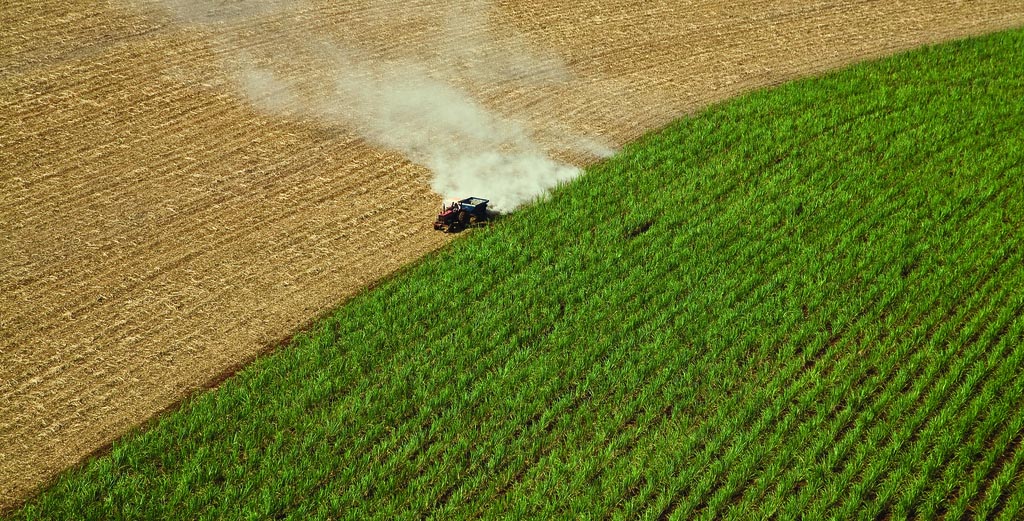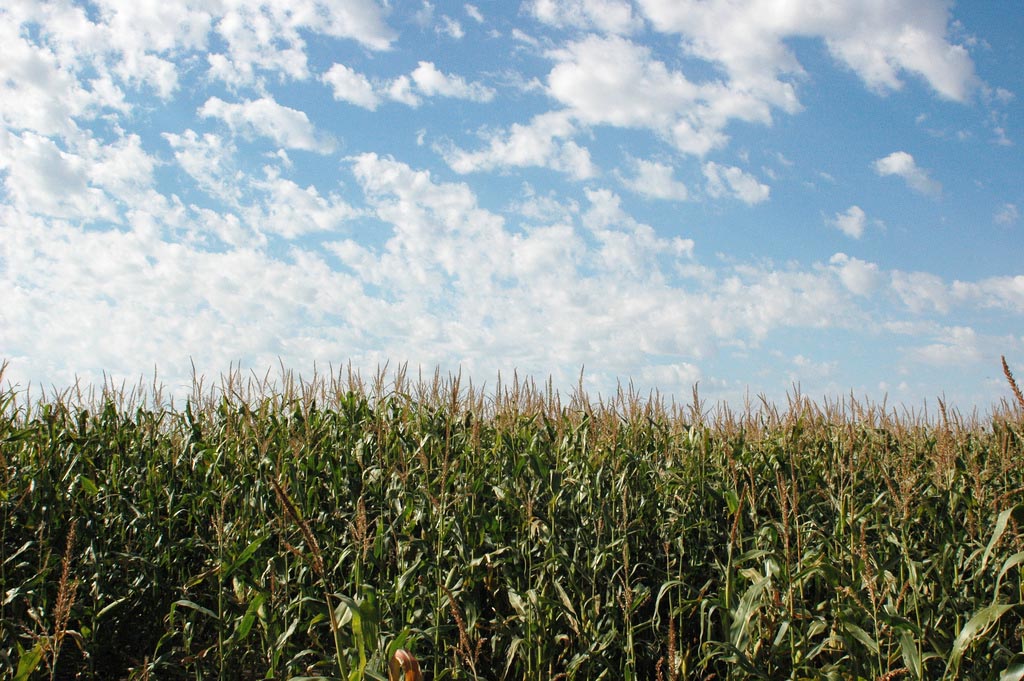Five or six years ago it seemed like biofuels really might be it, a serious replacement for all that nasty oil powering, well, roughly one-third of our lives. Renewable, capable of being made pretty much anywhere in some form, liquid (and therefore familiar), biofuels seemed to be, if not a green panacea, very, very good.
But fast forward to 2013 and you’ll rapidly pass through a period of deep green soul searching, and the realization that most biofuels from the so-called first generation either created as many problems environmentally as they solved, didn’t reduce emissions as much as claimed (some actually increasing them), or caused or as least contributed to serious social problems. Or all of the above.
Which doesn’t mean we ought to be writing off biofuels entirely. It’s just that a green technology that once seemed a simple solution, is far, far more complex issue than was originally thought.

It’s All About the Feedstock
Some terminology, for those that are coming to this for the first time: One thing you need to understand is the difference between first-generation and second-generation biofuels.
Ethanol, made from corn or another food crop, is considered a first-generation biofuel; cellulosic ethanol, made from agricultural, wood, or yard waste, is a second-generation biofuel. I’ve never seen a specific, strictly defined definition between first- and second-generation biofuels, but the terms are generally used to define established technologies (even if not really widely deployed) in former case, versus emerging technologies in the latter. Over the past several years, biofuel companies, as well as backers in government, have touted the wonders of second-generation biofuels, too often though as something perpetually just over the horizon of commercial viability.
Some more important terminology: You’ve no doubt heard by now of ethanol and biodiesel. Without getting into the chemical differences between them, they require different types of engines to burn them, and require different infrastructure to distribute them than fossil fuels—due to a variety of factors beyond the scope of this piece.
Then there are so-called drop-in biofuels. These are biofuels, often made from the same feedstocks as ethanol or biodiesel, that are identical on a chemical level to petroleum-based gasoline or diesel fuel. This means they can be used in engines without any sort of modification and, crucially for oil distributors, can be distributed using the existing distribution network.
Now we get to the crux of the issue, memorize this: A biofuel is only as green as the feedstock used to make it, and there are wide variations in this. In other words, you simply can’t say that ethanol is environmentally friendly, or biodiesel is a sustainable fuel, without knowing what was used to make it.

What feedstocks have the least and most environmental impact?
A study last fall coming out of Switzerland’s Federal Laboratories for Material Science and Technology found that, when burned, virtually every feedstock currently being cultivated results in some reduction in greenhouse gas emissions, compared to petroleum-based fuels—though some offer less than a 5% reduction.
But it all goes downhill from there, with the environmental impact in other areas actually being much worse than fossil fuels, for a frightening number of potential biofuel sources. In particular, eutrophication of both fresh and salt water sources, as well as negative impacts on land use (it takes land to grow biofuels…) were both more than two-thirds worse with all the biofuel feedstocks considered.
Sources that fared well in the survey: Jatropha, grown as hedges, in East Africa; sugar beets, grown in Switzerland. The problem here is that jatropha cultivated in the way with least environmental impact isn’t scalable to the commercial level. And, well, sugar beets aren’t on the top of many companies list of biofuel sources.
Algae wasn’t considered in this particular survey, but other surveys have shown that algae has great potential for greenhouse gas reduction (though this varies depending on how it’s grown), with less of the negative environmental side effects.
Sources that weren’t that great: Unfortunately, most of the ones most commonly used. Rapeseed oil (that’s canola oil to those in North America, but the rest of the English-speaking world calls it rapeseed) offers greater than a 40% reduction in emissions, but slightly increases ozone formation, toxicity in fresh water, particulate matter in the air, and has a much greater negative impact on land use. It’s the same story for soybeans grown in the US, oil palms grown in Columbia, sugarcane are similar. Corn grown in the US is similar on the negative eco-impacts, but with the added demerit of offering just a 5% reduction in emissions.
Sources that really are awful for biofuels, two stand out: Soybeans grown in Brazil (two-thirds worse emissions than fossil fuels, with similar or worse environmental impact than fossil fuels across the board), and oil palms grown in Indonesia and Malaysia.
The environmental impact of oil palms in Indonesia and Malaysia (the vast majority of the world’s production) is so bad, it deserves it’s own special mention. Despite industry attempts to greenwash its image—as well as serious but still ultimately fledgling efforts to build a sustainable palm oil industry in the region—oil palm cultivation is an environmental disaster of epic proportions.
Beyond devastating wildlife habitat for several endangered species and pushing indigenous population out of their homes, the greenhouse gases resulting from clearing land for oil palm plantations and then burning the biodiesel made from the palm oil are gigantic. The exact increase compared to petro-diesel varies depending on the study, but it’s anywhere from 8-20 times those of diesel. That’s all due to the plantations being established on rainforest, releasing tons of stored carbon in the soil and trees, and then the changed carbon sequestration potential of the land after the plantation is constructed.
Though not considered by any study I’ve seen, there’s one biofuel feedstock that needs to be mentioned and singled out for, to my thinking, to be an utter abomination, in fact a symbol of how bizarrely off course we’ve become as a culture. That feedstock is animal waste fat and body parts, left over from factory farms. It’s not really at any sort of commercial scale yet (phew!) but Tyson Foods has attempted to commercialize biofuel from beef and chicken fat.
There’s something to be said for utilizing waste products for sure, but when those waste products come from one of the most environmental destructive and ethically egregious activities ever conceived, nothing good at all can come from it. It’s a small step away from the fuel equivalent of Soylent Green.

How Much Biofuel is Produced Now
Problems with particular feedstocks aside, and biofuels falling from the headlines, global biofuel production over the past five years has nevertheless increased dramatically, roughly doubling for ethanol and tripling for biodiesel. In 2012, about 80 billion liters of ethanol were produced (equivalent to about 500 million barrels of oil), alongside 15 billion liters of biodiesel (94 million barrels of oil). For sake of comparison, global consumption of oil last year, stood at a bit over 32 billion barrels.
For ethanol, the overwhelming majority of the world’s supply in recent years came from the United States (hello, corn subsidies!) and Brazil (hello, sugarcane). The majority of biodiesel production is split between the European Union (about half of global production) and the US, Brazil, and Argentina (roughly similar to the EU production). Indonesia’s production of palm oil biodiesel, with its huge environmental impact, is thankfully a tiny proportion of the global total—the majority of palm oil goes into the food industry.
Where Do Biofuels Fit In?
Since biofuels are really meant to displace petroleum at best, or at least displace growth in oil usage, and oil overwhelming goes into transportation, this has always been the natural fit in an overall energy strategy. But the trouble is (yes, another trouble…) that a number of studies conclude that using renewable energy to charge electric cars is less environmentally harmful than using biofuels. That is to say, even in its theoretically ideal application, biofuel isn’t that ideal.
There are some transportation uses where the prospect of electricity being the primary power source seems a long way off, if it ever can be done using any technology we currently have. One of those is commercial jet-powered aviation. Here biofuels may indeed make sense in the long run, provided that only the best feedstocks (maybe algae or camelina) are used.
There’s another usage where biofuels could potential still have great benefit: Local agriculture in the tropics. I’m thinking of jatropha here, grown alongside fields as hedges (as the Swiss study examined), and at a subsistence level. Used in the basic diesel engines that often power irrigation pumps, fuel could be grown, processed and used on a local or regional basis, displacing costly purchases of diesel fuel, while at the same time assisting with the task of keep animals out of fields. Perhaps even here solar-powered irrigation may be a better choice, while also provided much-needed electricity, but nevertheless it could provide a worthwhile path towards improved human development.